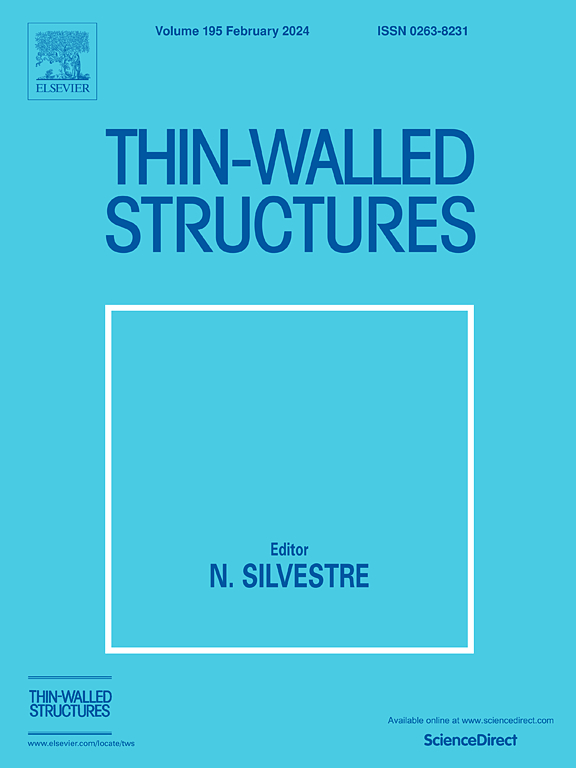利用深度生成模型对带有逆设计三维辅助核心的夹层板进行非线性振动分析
IF 5.7
1区 工程技术
Q1 ENGINEERING, CIVIL
引用次数: 0
摘要
本文以深度生成模型(DGM)为基础,介绍了一种创新的夹层板结构,其特点是采用了逆向设计的辅助三维晶格核心,并对其非线性振动特性和各种参数设置下的有效泊松比进行了详细研究。通过结合条件估计器和质量损失评估函数,增强型条件生成对抗网络能够设计三维桁架辅助拓扑结构,从而实现定制的负泊松比,而无需依赖主观经验。此外,还利用三维金属打印技术制作了晶格试样,并通过振动实验和有限元模型验证了这些基于 DGM 的三维辅助结构的机械性能。与现有文献报道的通过传统拓扑优化方法获得的自然频率相比,这些结构表现出明显的优越性。研究还探讨了不同的功能分级配置、温度变化、边界条件和尺寸参数对逆向设计的辅助夹层板的固有频率、非线性振动响应和有效泊松比的影响。本文章由计算机程序翻译,如有差异,请以英文原文为准。
Nonlinear vibration analysis of sandwich plates with inverse-designed 3D auxetic core by deep generative model
Building on a deep generative model (DGM), this paper introduces an innovative sandwich plate structure featuring an inverse-designed auxetic 3D lattice core and conducts a detailed investigation of its nonlinear vibration characteristics and effective Poisson's ratios under various parameter settings. By incorporating a conditional estimator and quality loss evaluation functions, the enhanced conditional generative adversarial networks are capable of designing 3D truss auxetic topologies that achieve customized negative Poisson's ratios without reliance on subjective experience. Additionally, lattice specimens are created using 3D metal printing, and the mechanical properties of these DGM-based 3D auxetic structures are validated through vibration experiments and finite element models. These structures exhibit significantly superior natural frequencies compared to those obtained through conventional topology optimization methods reported in existing literature. The study also explores the impact of different functionally graded configurations, temperature variations, boundary conditions, and dimensional parameters on the natural frequency, nonlinear vibration response, and effective Poisson's ratio of the inverse designed auxetic sandwich plates.
求助全文
通过发布文献求助,成功后即可免费获取论文全文。
去求助
来源期刊

Thin-Walled Structures
工程技术-工程:土木
CiteScore
9.60
自引率
20.30%
发文量
801
审稿时长
66 days
期刊介绍:
Thin-walled structures comprises an important and growing proportion of engineering construction with areas of application becoming increasingly diverse, ranging from aircraft, bridges, ships and oil rigs to storage vessels, industrial buildings and warehouses.
Many factors, including cost and weight economy, new materials and processes and the growth of powerful methods of analysis have contributed to this growth, and led to the need for a journal which concentrates specifically on structures in which problems arise due to the thinness of the walls. This field includes cold– formed sections, plate and shell structures, reinforced plastics structures and aluminium structures, and is of importance in many branches of engineering.
The primary criterion for consideration of papers in Thin–Walled Structures is that they must be concerned with thin–walled structures or the basic problems inherent in thin–walled structures. Provided this criterion is satisfied no restriction is placed on the type of construction, material or field of application. Papers on theory, experiment, design, etc., are published and it is expected that many papers will contain aspects of all three.
 求助内容:
求助内容: 应助结果提醒方式:
应助结果提醒方式:


